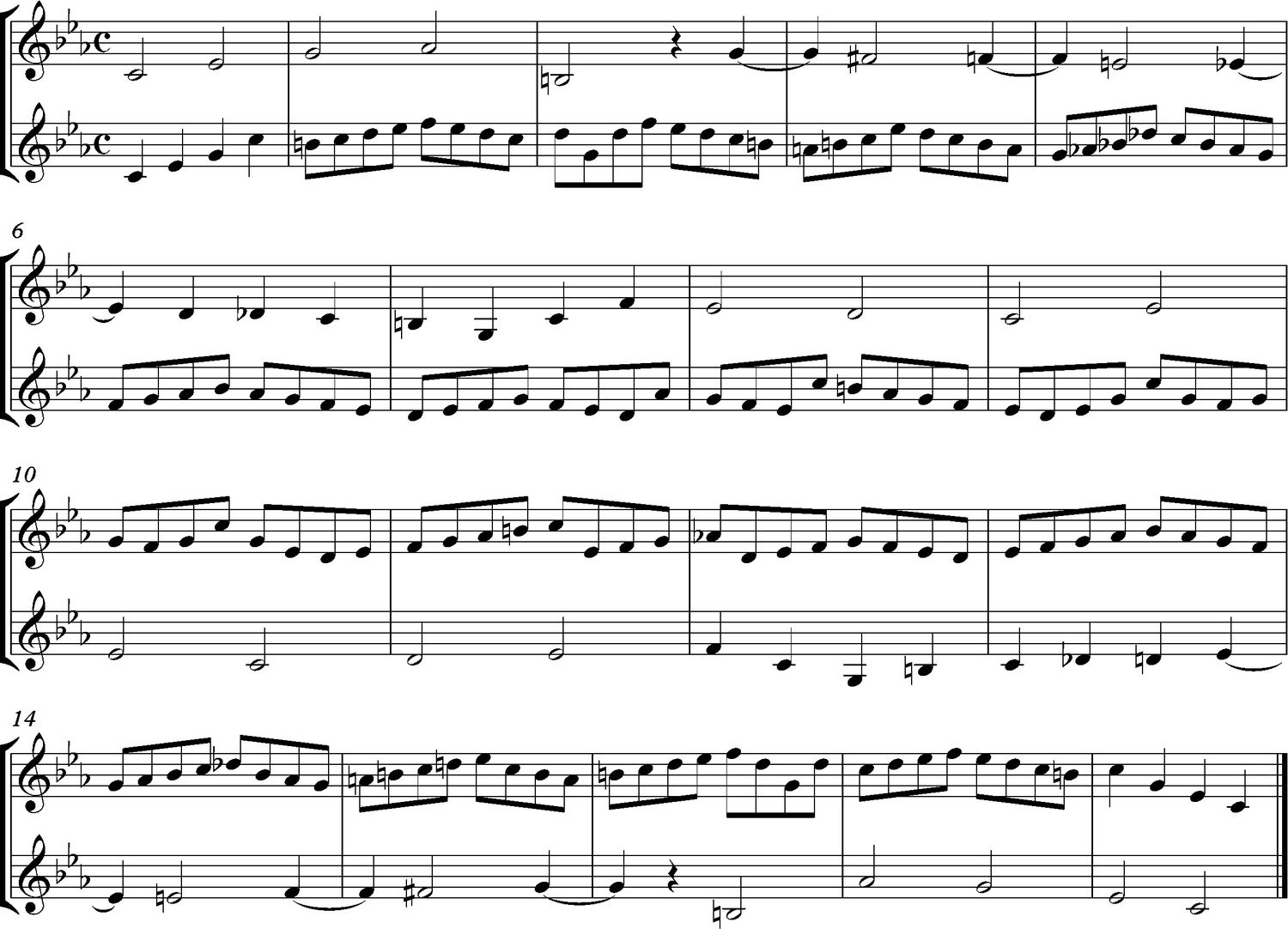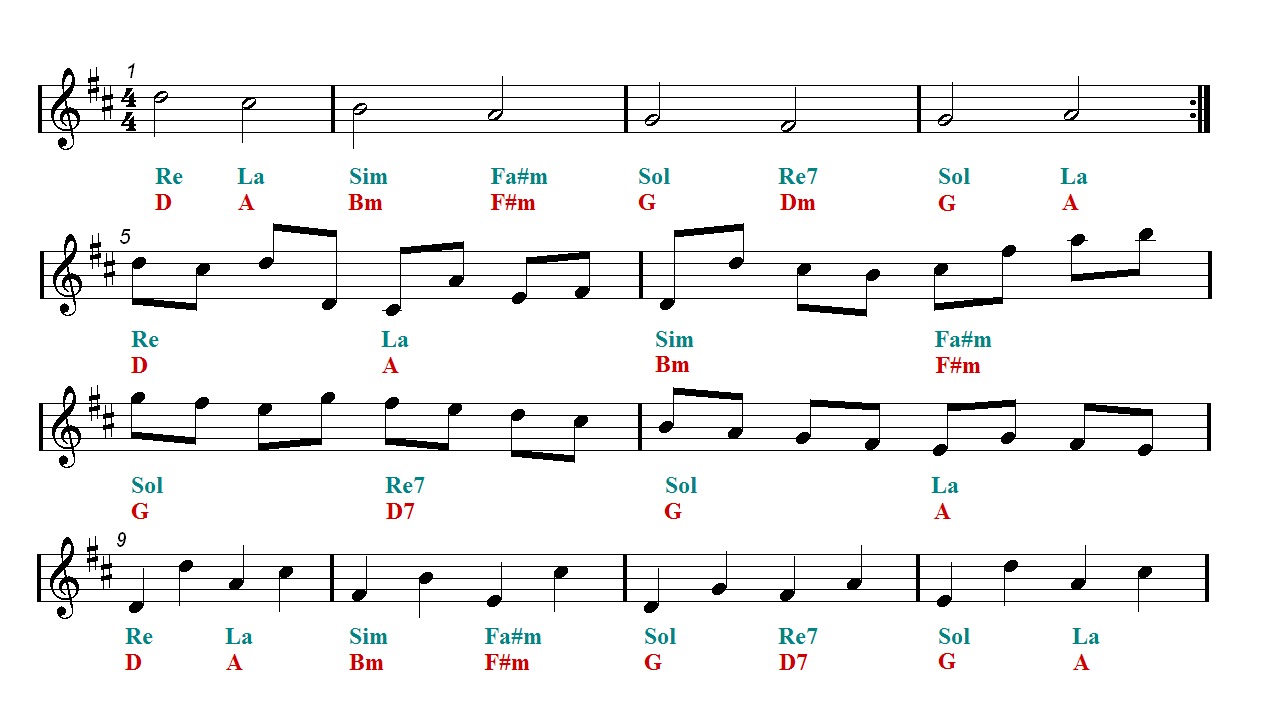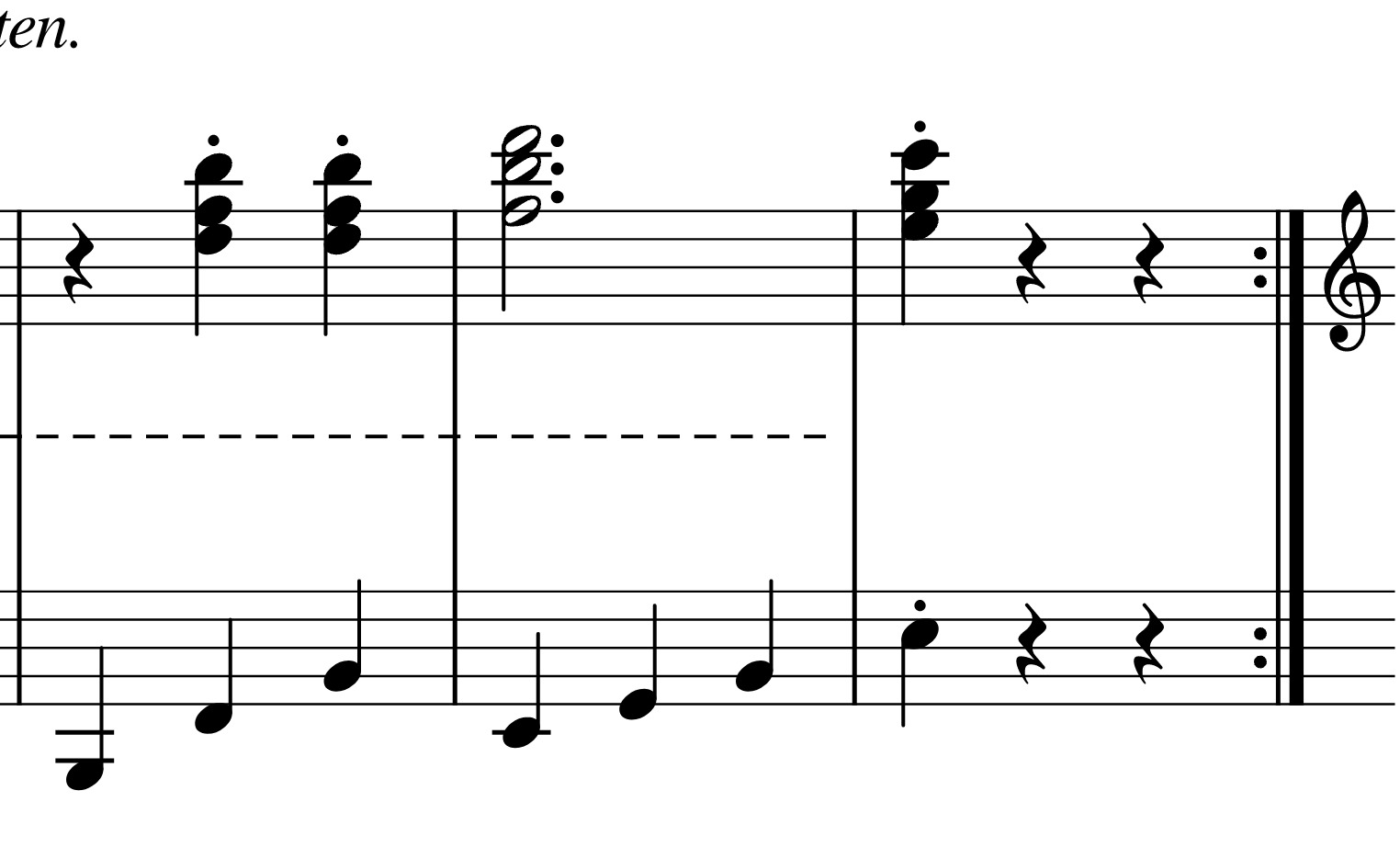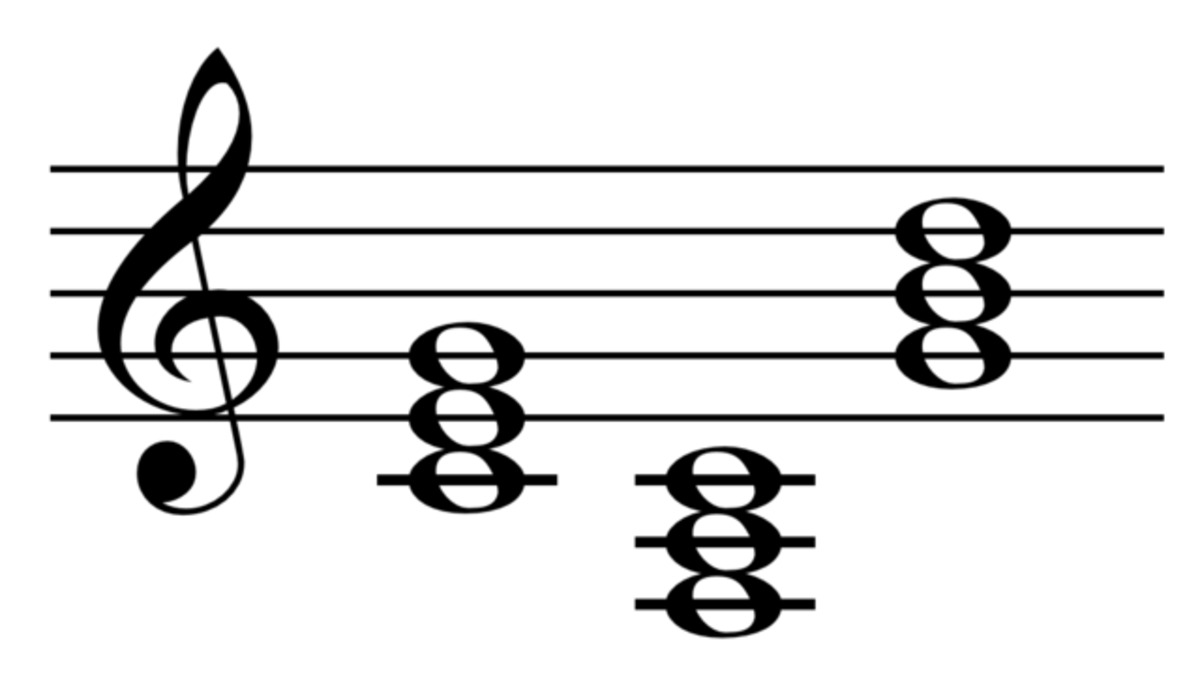Home>Production & Technology>Music Theory>What Did Ancient Greek Music Theory Include The Concept Of


Music Theory
What Did Ancient Greek Music Theory Include The Concept Of
Published: February 1, 2024
Discover what ancient Greek music theory encompassed and how it incorporated the concept of music theory. Enhance your understanding of the origins of music theory.
(Many of the links in this article redirect to a specific reviewed product. Your purchase of these products through affiliate links helps to generate commission for AudioLover.com, at no extra cost. Learn more)
Table of Contents
- Introduction
- Background of Ancient Greek Music
- The Concept of Music Theory in Ancient Greece
- Pythagorean Tuning and Harmonic Theory
- Aristoxenus’ Elements of Music
- Modes and Scales in Ancient Greek Music
- Rhythm and Metre in Ancient Greek Music
- Notation Systems in Ancient Greek Music
- Influence and Legacy of Ancient Greek Music Theory
- Conclusion
Introduction
Music theory is the foundation of understanding and analyzing the complexities of music. It provides a framework for composers, musicians, and music enthusiasts to comprehend the principles behind the creation and organization of music. While the study of music theory has evolved over centuries, it traces its origins back to the ancient world, particularly Ancient Greece.
The ancient Greeks placed great importance on the arts and believed that music was a fundamental part of human expression and civilization. However, their understanding of music went beyond mere entertainment. They delved into the theoretical aspects of music, exploring its mathematical and philosophical underpinnings. Ancient Greek music theory not only encompassed the study of the various elements of music but also delved into the ethical and emotional implications of different musical compositions.
To fully appreciate the scope and significance of ancient Greek music theory, one must understand the cultural and historical context in which it was developed. Ancient Greek society valued the integration of music into religious and communal practices. Music was believed to have a direct influence on the human psyche, with the power to evoke specific emotions and transcend earthly limitations.
In this article, we will explore the concept of music theory in Ancient Greece, focusing on key aspects such as Pythagorean tuning and harmonic theory, Aristoxenus’ elements of music, modes and scales, rhythm and meter, and notation systems. We will also examine the influence and legacy of ancient Greek music theory, highlighting its lasting impact on the field of music and the development of Western musical traditions.
Background of Ancient Greek Music
Music held a significant place in ancient Greek society, playing a vital role in religious ceremonies, public performances, and private gatherings. It was not merely seen as a form of entertainment but was considered a powerful tool for emotional expression and spiritual connection. The ancient Greeks believed that music had the ability to affect one’s mood and character, with different musical modes producing distinct emotional responses.
Ancient Greek music had its roots in the oral tradition, with songs and melodies being passed down through generations. Initially, music was primarily monophonic, consisting of a single melodic line accompanied by the rhythm of percussion instruments. However, over time, polyphony emerged, with multiple melodic lines intertwining to create harmonies.
The Greeks associated music with the divine and believed that it had the power to imitate the order and harmony of the universe. They attributed the invention of music to the gods, with Apollo, the god of music and the arts, being recognized as the patron deity. The Muses, the goddesses of inspiration, were also invoked for guidance and creativity in musical endeavors.
Furthermore, music was closely linked to the education system in ancient Greece. It was considered an essential part of one’s upbringing, along with other subjects like mathematics, philosophy, and physical training. Children were taught to sing and play musical instruments as a means of developing discipline, aesthetic sensibilities, and a connection to the cultural heritage of their society.
It is important to note that ancient Greek music was not limited to vocal and instrumental pieces. It also encompassed poetic compositions, as the Greeks believed that music and poetry were inseparable. The blending of music and poetry, known as melopoeia, was considered a powerful medium for storytelling and conveying emotions.
The cultural significance of music in ancient Greece laid the groundwork for the development of music theory. As the Greeks sought to understand and explain the intricacies of the musical art form, they embarked on a systematic exploration of its elements, resulting in the formulation of the first known music theories in history.
The Concept of Music Theory in Ancient Greece
Ancient Greek music theory encompassed the study and analysis of the fundamental principles that govern the creation and organization of music. It aimed to provide a systematic understanding of the various elements of music, such as melody, harmony, rhythm, and notation. Music theory in ancient Greece was not only concerned with the practical aspects of music-making but also explored the philosophical and mathematical underpinnings of this art form.
Theoretical discussions on music were prevalent among ancient Greek philosophers, mathematicians, and musicians. They sought to unravel the mysteries of music and its impact on the human psyche and society as a whole. Through their explorations, they developed theories and frameworks that shed light on the relationships between different musical elements and the overall structure of compositions.
One prominent aspect of music theory in ancient Greece was the investigation of the mathematical and harmonic aspects of music. Pythagoras, the famous Greek mathematician and philosopher, made significant contributions to this area of study. He discovered that the pitch of musical notes could be represented by numerical ratios, laying the foundation for the concept of harmony. Pythagorean tuning, based on the ratios of simple whole numbers, became a fundamental principle in ancient Greek music theory.
Another important figure in ancient Greek music theory was Aristoxenus, a philosopher and music theorist. He developed a comprehensive system of musical elements known as the “elements of music.” According to Aristoxenus, music consisted of four primary elements: melody, rhythm, harmony, and words (lyrics). He examined the relationships between these elements and how they interacted to create a cohesive musical composition.
In addition to theoretical frameworks, ancient Greek music theory also explored the concept of modes and scales. Modes referred to distinct patterns of pitches and intervals that characterized different musical styles and moods. Each mode had its unique set of melodic and harmonic characteristics, allowing composers and musicians to evoke specific emotions or convey storytelling through their compositions.
Furthermore, rhythm and meter played a crucial role in ancient Greek music theory. It involved the study of the organization of time in musical compositions, including rhythmic patterns, accents, and tempos. Various rhythmic structures, such as duple, triple, and mixed meters, were explored to create diverse rhythmic expressions in music.
Lastly, ancient Greek music theory developed different notation systems to represent musical ideas and compositions. These notations provided guidelines for performers and composers, enabling them to reproduce and interpret music accurately. One notable notation system was the ancient Greek vocal notation, which used specific symbols to indicate pitch and duration.
The concept of music theory in ancient Greece laid the groundwork for future developments in Western music theory. It highlighted the interconnectedness of various musical elements and established a framework for analyzing and understanding the complexities of music. The contributions of ancient Greek music theorists continue to have a lasting impact on contemporary music theory and composition practices.
Pythagorean Tuning and Harmonic Theory
One of the key contributions of ancient Greek music theory was the development of Pythagorean tuning and the exploration of harmonic theory. Pythagoras, a renowned mathematician and philosopher, made groundbreaking discoveries that revolutionized the understanding of musical intervals and harmony.
Pythagorean tuning is based on the concept that musical intervals can be expressed as ratios of whole numbers. Pythagoras discovered that when a string is divided into certain ratios, such as 1:2, 2:3, and 3:4, it produces pleasing harmonic sounds. These ratios correspond to the perfect octave, perfect fifth, and perfect fourth intervals respectively, forming the foundation of Pythagorean tuning.
The Pythagorean concept of harmony extended beyond just the tuning of musical instruments. It proposed that the ratios found in musical intervals reflect the inherent mathematical order and harmony of the universe. This idea was significant in ancient Greek culture, as it connected the fundamental principles of music with broader philosophical and metaphysical concepts.
In addition to exploring tunings, Pythagorean harmonic theory delved into the mathematical relationships between notes and their corresponding frequencies. It emphasized the concept of harmonics, which are tones produced by the vibration of a string or air column in simple whole number ratios. Pythagoras identified the first four harmonics as the fundamental tone, octave, perfect fifth, and perfect fourth.
The discoveries made by Pythagoras and his followers had a profound impact on the development of music theory. They laid the groundwork for understanding consonance and dissonance in music, as well as the relationships between different pitches and intervals. These concepts would later shape the development of Western music theory and the establishment of standard tuning systems.
However, Pythagorean tuning had its limitations. The system’s strict reliance on whole number ratios resulted in the accumulation of small discrepancies, known as the Pythagorean comma, over multiple iterations. As a result, it became increasingly difficult to accurately tune instruments in all keys using Pythagorean tuning alone. This led to the emergence of alternative tuning systems, such as Just Intonation and Equal Temperament, which sought to mitigate these discrepancies.
Despite its limitations, Pythagorean tuning and harmonic theory laid the foundation for understanding the mathematical relationships inherent in music. It paved the way for further explorations in music theory and the development of more sophisticated tuning systems that could accommodate the demands of diverse musical compositions.
Aristoxenus’ Elements of Music
Aristoxenus, an influential philosopher and music theorist in ancient Greece, made significant contributions to the field of music theory through his development of the “elements of music.” Aristoxenus believed that music consisted of four essential elements: melody, rhythm, harmony, and words (lyrics). His exploration of these elements provided a comprehensive framework for understanding the structure and composition of music.
Melody was considered the most fundamental element of music according to Aristoxenus. It encompassed the arrangement of pitches, intervals, and the overall contour of a musical composition. Aristoxenus emphasized the importance of melodic patterns and the emotional impact they could have on the listener. He argued that different melodic shapes elicited specific emotions, and understanding these patterns was essential to composing emotionally evocative music.
Rhythm was another crucial element in Aristoxenus’ theory. It focused on the organization of time in music, including the duration and accentuation of individual notes and the patterns of rhythmic motifs. Aristoxenus recognized the significance of rhythmic patterns in creating musical structure and conveying a sense of momentum or stability. His exploration of rhythm laid the foundation for the understanding and analysis of meter and rhythmic patterns in later music theory.
Harmony, in Aristoxenus’ theory, referred to the simultaneous sounding of multiple notes or pitches in a musical composition. He acknowledged the impact that combining different pitches could have on the overall character and emotional impact of the music. As a result, Aristoxenus’ theories laid the groundwork for the exploration of harmonic relationships and the development of harmony as a central component of Western music theory.
The inclusion of words, or lyrics, as an element of music may seem peculiar to modern readers, but it was a significant aspect of Aristoxenus’ theory. In ancient Greek music, vocal compositions often intertwined music and poetry. Aristoxenus recognized the intrinsic connection between music and poetry, as each element enhanced the expressive power of the other. He understood that lyrics played a crucial role in shaping the emotional content and narrative of a musical composition.
Aristoxenus’ elements of music provided a comprehensive framework that emphasized the interconnected nature of melody, rhythm, harmony, and lyrics. He recognized that these elements worked together harmoniously to create a unified musical composition. Aristoxenus’ theories not only provided a foundation for analyzing and understanding ancient Greek music but also left a lasting impact on subsequent music theorists and composers.
His work served as a precursor to more detailed and complex theories developed in later periods, including the exploration of scales, modes, and further elaboration on the role of melody, rhythm, and harmony. Aristoxenus’ emphasis on emotional expressivity and the interaction of different musical elements laid the groundwork for the development of Western music theory as we know it today.
Modes and Scales in Ancient Greek Music
Modes and scales played a vital role in ancient Greek music, shaping the melodic and harmonic structure of compositions. The Greeks identified several distinct modes, each with its unique set of intervals and characteristics, allowing composers and musicians to evoke specific emotions and moods in their music.
Modes in ancient Greek music were based on specific patterns of pitches and intervals. The three primary modes recognized by the ancient Greeks were the Dorian, Phrygian, and Lydian modes. Each mode had its own characteristic intervals and melodic characteristics, imparting a distinct flavor and emotional quality to the music.
The Dorian mode, often associated with solemnity and strength, was regarded as the most masculine of the modes. It featured a characteristic interval sequence of whole step, half step, whole step, whole step, whole step, half step, and whole step.
The Phrygian mode, on the other hand, was considered more emotional and poignant. It had a distinct interval sequence of half step, whole step, whole step, whole step, half step, whole step, and whole step.
The Lydian mode was associated with brightness and was regarded as the most feminine of the modes. It featured an interval sequence of whole step, whole step, half step, whole step, whole step, whole step, and half step.
In addition to these primary modes, the ancient Greeks recognized other derivative modes, which were variations of the primary modes. These derivative modes incorporated different starting pitches within the primary mode’s interval structure, resulting in new melodic and emotional nuances.
The ancient Greeks also constructed scales within the framework of modes. A scale referred to a series of consecutive pitches within a specific mode. The most common scale used in ancient Greek music was the diatonic scale, which consisted of seven pitches selected from the intervals of a particular mode. These pitches formed the foundation for melodic constructions within the mode, providing a framework for composition.
Furthermore, ancient Greek music theory identified different melodic formulas or patterns, known as tetrachords. A tetrachord consisted of four consecutive pitches, spanning either a perfect fourth or a perfect fifth interval. These tetrachords were combined to create larger melodic structures within a mode, providing composers with a flexible and intuitive method for constructing melodies.
The concept of modes and scales in ancient Greek music not only provided a means to organize musical material but also allowed composers and musicians to create music that conveyed specific emotions and moods. These modes and scales formed the foundation for melodic and harmonic exploration, influencing the development of later musical traditions and providing the groundwork for the scales and modes used in contemporary music.
Rhythm and Metre in Ancient Greek Music
Rhythm and metre played a crucial role in ancient Greek music, providing a framework for organizing time and creating rhythmic patterns in compositions. The Greeks recognized that the arrangement and manipulation of rhythm could significantly impact the emotional and aesthetic impact of the music.
In ancient Greek music, rhythm referred to the organization and duration of notes, rests, and accents within a composition. The Greeks explored various rhythmic patterns and structures, seeking to understand the relationship between rhythm and the overall character of the music. They believed that rhythmic patterns had the power to convey a sense of movement, stability, excitement, or calmness.
Meter, a concept closely related to rhythm, constituted the larger framework within which rhythmic patterns were organized. Meter provided a consistent and predictable pattern of strong and weak beats that created a sense of regularity and stability in the music. The Greeks used different types of meter, including duple, triple, and mixed meters, to structure their compositions.
Duple meter consisted of a regular alternation between strong and weak beats in groups of two. This type of meter was often associated with lively and energetic rhythms. Triple meter, on the other hand, featured a regular alternation between strong and weak beats in groups of three, creating a more flowing and graceful rhythmic feel. Mixed meters combined elements of both duple and triple meter, resulting in more complex and varied rhythmic patterns.
The Greeks also developed a system of rhythmic notation known as rhythm signs. These rhythmic symbols represented the duration and placement of individual notes and rests within a composition. While the exact interpretation of these rhythm signs is not fully understood, their existence suggests that ancient Greek musicians had a means of notating rhythm to aid in the interpretation of musical compositions.
In addition to rhythm and meter, dance played a significant role in ancient Greek music. Many musical compositions were closely linked to specific types of dances, with the rhythm and meter serving as the foundation for the dancers’ movements. This connection between music and dance further emphasized the importance of rhythm in ancient Greek musical culture.
Despite the limited surviving evidence on specific rhythmic practices in ancient Greek music, the emphasis on rhythm and metre is evident in ancient Greek writings and depictions of musical performances. Rhythm and metre provided a means of organizing and coordinating the musical elements, allowing for a cohesive and aesthetically pleasing musical experience.
The exploration of rhythm and metre in ancient Greek music laid the foundation for later developments in Western music. Composers and musicians throughout history have drawn inspiration from these ancient rhythmic concepts, continually expanding and innovating upon the rhythmic palette of music in diverse genres and traditions.
Notation Systems in Ancient Greek Music
Notation systems played a critical role in ancient Greek music, providing a means to symbolically represent musical ideas and compositions. While the exact details of ancient Greek music notation have been partially lost to time, evidence suggests the existence of various systems that aided in the performance and transmission of musical works.
One notable notation system in ancient Greece was the use of vocal notation, which employed specific symbols to represent pitch and melodic contours. The vocal notation system utilized letters of the Greek alphabet to denote different pitches. These letters were placed above the text of a song to guide the singer in the melodic execution of the composition. While the precise interpretation of these symbols is not fully understood, their existence indicates a form of musical notation in ancient Greek vocal music.
In addition to vocal notation, instrumental notation systems are also believed to have existed in ancient Greece. These systems employed various symbols and markings to indicate specific playing techniques, ornamentations, and other instrumental nuances. Although the specific details of these instrumental notations remain largely unknown, they offer insights into the systematic approach taken by ancient Greek musicians in documenting and transmitting their musical knowledge.
It is important to note that ancient Greek music notation was not as comprehensive or precise as the modern Western staff notation system. The focus of Greek notation was primarily on conveying the essential melodic ideas and guiding performers within the oral tradition.
Notation served as a mnemonic aid for musicians to remember and reproduce musical compositions accurately. It allowed for the preservation and dissemination of musical works, ensuring their continued performance and study over time. However, the reliance on notation in ancient Greece was relatively limited compared to the robust system developed in later periods of Western music history.
The lack of detailed surviving notations from ancient Greece poses challenges in fully reconstructing and understanding the intricacies of their musical practices. Nonetheless, the existence of various notation systems in ancient Greece underscores the importance of written representation in documenting and transmitting musical knowledge across generations.
The exploration of notation systems in ancient Greece laid the foundation for subsequent developments in musical notation. The emergence of more sophisticated notational systems in later periods, such as the medieval neumes and the modern Western staff notation, built upon the concepts and principles established in ancient Greek music notation.
While ancient Greek music notation may not resemble the complex systems used today, its existence demonstrates the ancient Greeks’ pursuit of finding ways to document and preserve their rich musical heritage, thereby contributing to the broader history and development of music notation.
Influence and Legacy of Ancient Greek Music Theory
The influence of ancient Greek music theory extends far beyond its time, shaping the foundation of Western music and leaving a lasting legacy on the development of music theory and composition. The concepts and ideas explored by ancient Greek music theorists continue to resonate in the contemporary understanding and practice of music.
One of the most significant contributions of ancient Greek music theory is its exploration of the mathematical and philosophical aspects of music. The discoveries made by Pythagoras and his followers, such as the understanding of musical intervals as numerical ratios, laid the foundation for the concept of harmony and the development of tuning systems. This mathematical approach to music permeates Western music theory and provides the basis for understanding the relationships between different pitches and harmonies.
The concept of modes and scales introduced in ancient Greek music theory also had a profound impact on the development of Western music. These modal structures influenced the melodic and harmonic choices made by composers throughout history. The modes found in ancient Greek music provided the groundwork for the construction of scales and the exploration of tonalities in various musical traditions.
Furthermore, the exploration of rhythm and metre in ancient Greek music theory laid the foundation for the understanding and analysis of rhythmic patterns in later musical traditions. The concepts of rhythmic organization and the use of different metrical structures remain integral to contemporary music, influencing the composition and performance of various genres and styles.
Ancient Greek music theory also fostered a sense of unity between music and other disciplines such as philosophy, mathematics, and poetry. The integration of music into these broader fields of knowledge shaped the interdisciplinary approach to music that continues to be relevant today. Additionally, the ancient Greeks’ recognition of the emotional and ethical implications of music inspired subsequent generations of musicians and composers to explore the expressive potential of music through their compositions.
The legacy of ancient Greek music theory is evident in the development of Western music, from the classical period through the Renaissance and into contemporary music. The theoretical concepts and principles established by ancient Greek music theorists provided a solid framework for understanding the structure, organization, and expressive possibilities of music. They served as a springboard for further innovations and advancements in music theory throughout history, continuously shaping the way we approach and appreciate music.
Overall, ancient Greek music theory’s enduring influence on Western music has demonstrated the universal and timeless nature of its foundational principles. The concepts and ideas born in ancient Greece continue to shape the way musicians compose, theorists analyze, and audiences experience music, perpetuating the ongoing legacy of ancient Greek music theory in the world of music today.
Conclusion
Ancient Greek music theory stands as a testament to the profound knowledge and insight of the ancient Greeks in understanding and exploring the intricacies of music. The concept of music theory in ancient Greece extended beyond mere entertainment and encompassed the philosophical, mathematical, and emotional dimensions of music. From the discovery of Pythagorean tuning and harmonic theory to the exploration of modes, scales, rhythm, and metre, ancient Greek music theory laid the foundation for the development of Western music.
The contributions of ancient Greek music theorists such as Pythagoras and Aristoxenus continue to influence the way we perceive, analyze, and create music. Their theories and insights have shaped the understanding of musical intervals, harmonies, musical structures, and compositional techniques. The exploration of modes and scales provided a framework for melodic and harmonic expression in diverse musical traditions.
While the precise details of ancient Greek music notation and specific performance practices remain shrouded in mystery, the existence of notation systems and the integration of music into ancient Greek society underscored the significance of preserving and transmitting musical knowledge across generations.
The legacy of ancient Greek music theory is evident in the continuous development of music throughout history. From the classical period to the Renaissance and into contemporary music, the underlying principles and concepts established by ancient Greek music theory have shaped the way we create and appreciate music.
As we continue to explore the realms of music theory and composition, we owe a debt of gratitude to the ancient Greeks for their profound insights and contributions. Their pursuit of knowledge and their recognition of the inherent beauty and power of music have left an indelible mark on the world of music, inspiring generations of musicians, composers, and theorists to push the boundaries of musical expression.
In conclusion, ancient Greek music theory serves as a foundation upon which the complexities of music have been built. It has not only provided a framework for understanding the theoretical aspects of music but has also explored the emotional, mathematical, and philosophical dimensions of this universal art form. Its influence on Western music has been profound, shaping our understanding, appreciation, and creation of music. Ancient Greek music theory continues to inspire and guide us in our pursuit of musical excellence, ensuring that the legacy of their musical insights will endure for generations to come.











